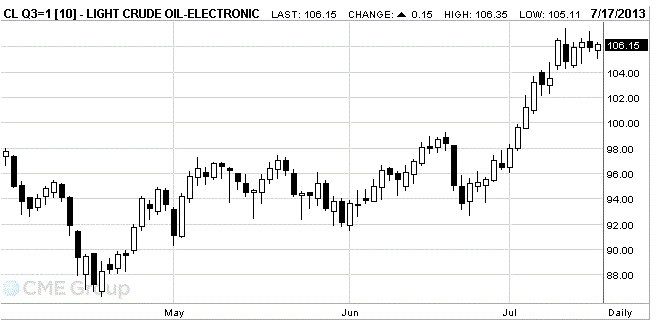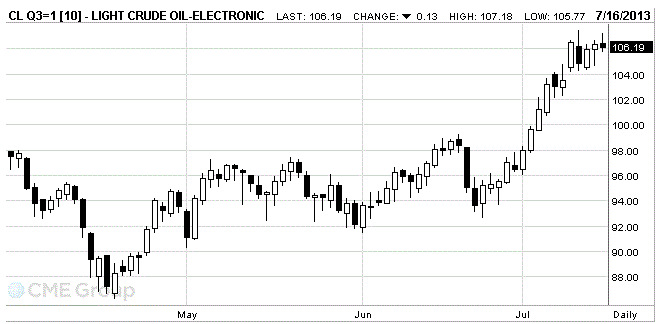Notícias do Mercado
-
16:43
Oil: an overview of the market situation
Prices for WTI crude oil rose slightly, after a government report showed that the amount of oil reserves in the U.S. fell more than expected, and the demand for gasoline has decreased. As for the cost of oil brand Brent, its price has dropped significantly, showing a loss of $ 1.
According to the report from the Energy Information Administration, following a seven-day period that ended on July 12, crude oil inventories in the U.S. fell by 6,902 million barrels to 367.016 million barrels level. It is worth noting that according to the average forecasts of experts, the reserves had to be down only by 1.9 million barrels, after a decline of 9.9 million over the previous seven days.
The data also showed that due to lower gasoline consumption by 570,000 barrels per day, or 6.1% - to 8.73 million barrels per day (the biggest drop since January 7, 2005), gasoline stocks increased by 3.055 million barrels - up 224.083 million barrels. At the same time, it became known that the U.S. distillate stocks, which include diesel and heating oil, rose by 3.87 million barrels - up to 127.679 million barrels and refinery utilization in the United States amounted to 92.8% against 92.4% previous week
We also recall that yesterday, the American Petroleum Institute said crude oil reserves fell by 2.6 million barrels, gasoline inventories rose by 2.553 million barrels, distillate stocks rose by 3.821 million barrels and refinery capacity utilization rose from 92.1% to 92.5%.
Also, the dynamics of today's trading was influenced speech by Federal Reserve Chairman Ben Bernanke, who said that the pace of bond purchases was not on course. Meanwhile, he reiterated that the Fed could start reducing monthly purchases of bonds by the end of this year.
The cost of the August futures on U.S. light crude oil WTI (Light Sweet Crude Oil) rose to 106.15 dollars a barrel on the New York Mercantile Exchange.
August futures price for North Sea Brent crude oil mixture fell to $ 108.47 a barrel on the London exchange ICE Futures Europe.

-
16:22
Gold: an overview of the market situation
Gold prices fell sharply, dropping at the same time to the $ 1277 that was related to statements by Federal Reserve Chairman Ben Bernanke, who said that the U.S. central bank still expects minimize their stimulus measures later this year, but, nevertheless, there is likely to change. We also add that during the question and answer session, Bernanke said that the U.S. is in a difficult financial situation, the complexity is communication with the markets, but they have begun to understand the thinking of the Fed. He said that the financial policy is only for the short term.
It is worth noting that this year the price of gold has fallen by nearly 25% on fears that the Fed will limit the terms of quantitative easing, which brought gold to record highs in recent years, as well as put pressure on long-term interest rates, while as inflation fears stoked. Add that earlier this year, the Fed said it may reduce the bond-buying program, but more dovish tone Bernanke later led to a sharp fall in the dollar and a rebound in gold.
Gold reached a three-week high last Thursday, but have not been able to exceed the level of $ 1,300 per ounce. Physical demand also declined as prices rebounded from recent lows. Buying interest from China has also been reduced in the last few days, which was associated with a fall in Shanghai premiums to about $ 25 per ounce to $ 36 last week.
The outflow of gold exchange-traded funds, which issue securities backed by physical bullion, continued on Tuesday. The largest fund SPDR Gold Trust reported a fall of 1.5 tons of supplies, which increased the loss for the year to the level of 413 tons.
The cost of the August gold futures on COMEX today dropped to $ 1282.80 per ounce.

-
06:24
Commodities. Daily history for Jul 16’2013:
Change % Change Last
GOLD 1,291.90 8.40 0.65%
OIL (WTI) 105.74 -0.58 -0.55%
-